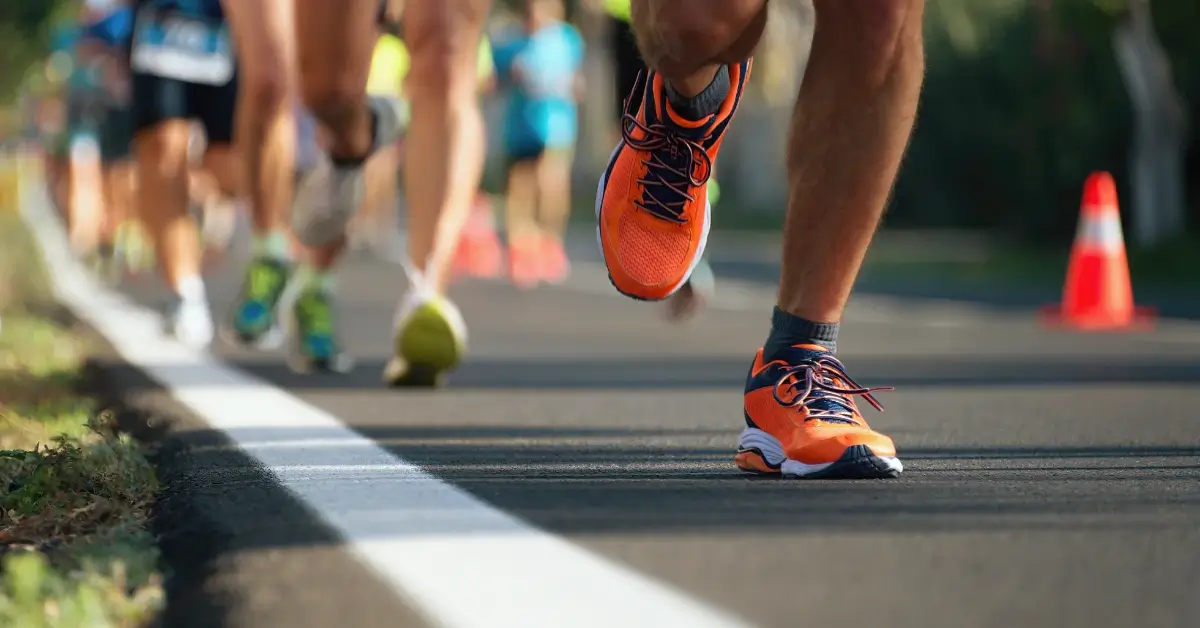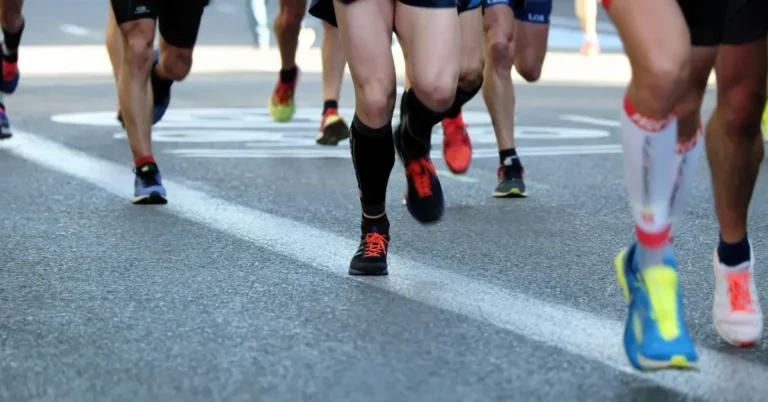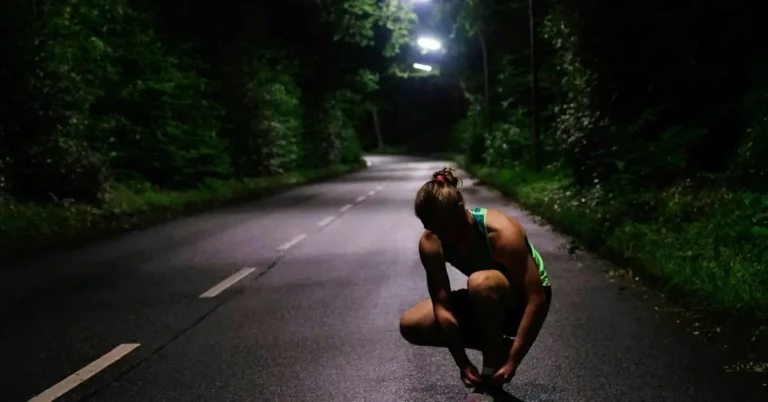Completing a marathon is a significant achievement, with the correct attire being a crucial factor for a triumphant run. You may be pondering on the appropriate outfit for a marathon that would allow for comfort and excellent performance. We are here to assist you in making the correct decisions.
Selecting the right marathon clothing can be a bit overwhelming, considering the range of options and weather conditions one might encounter. Don’t worry, we’ve got you covered. In this article, we’ll provide practical tips and recommendations to help you with your questions about what to wear for a marathon.
Pro´s:
- ✅ Quality Build
- ✅ Enhanced Cushioning
- ✅ Optimal Support
Con:
- ❌ Less suitable for trails
What To Wear For A Marathon? Prioritize Comfort!
As marathon runners, one of the most important questions we often ask ourselves is “what to wear for a marathon?” The primary goal is to be as comfortable as possible while running for an extended period of time. In this section, we’ll discuss the importance of selecting the right materials and wearing properly fitting clothes.
Selecting The Right Materials
When choosing what to wear for a marathon, opt for materials that are moisture-wicking and breathable. This can help keep you dry and comfortable throughout the race. Synthetic materials, such as polyester and nylon, are excellent options because they quickly remove sweat and allow air to circulate around your body. On the other hand, avoid cotton, as it tends to absorb moisture and can leave you feeling damp and uncomfortable.
In colder weather, layering is crucial. This involves wearing a moisture-wicking base layer, followed by an insulating middle layer, and finally, a wind-resistant or water-repellent outer layer. These layers work together to keep you warm, dry, and protected from the elements. Don’t forget to include gloves and a hat for added protection.
For warmer conditions, choose lightweight and light-colored clothing that allows for ventilation. Good examples are mesh panels and moisture-wicking fabrics that help regulate your body temperature during the race.
Proper Fitting Clothes
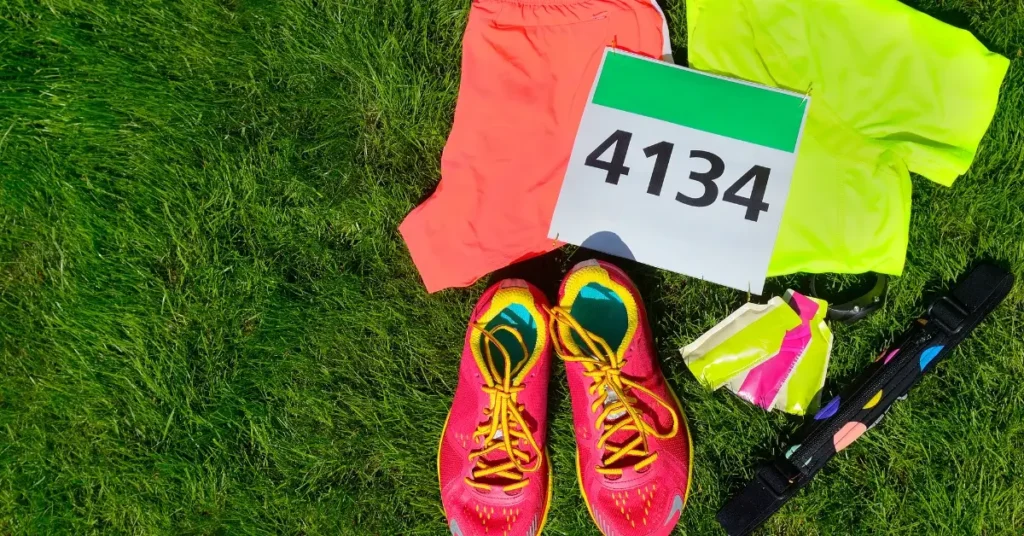
When running a marathon, it’s imperative that your clothes fit well, without causing friction or irritation. Avoid clothing that is too tight or restrictive, as this can lead to chafing and limited range of motion. Conversely, excessively loose clothing may create wind resistance and become cumbersome.
Test out your marathon gear during training runs to ensure they fit comfortably and do not cause any discomfort, skin irritation, or chafing. Make any necessary adjustments to your clothing choices before race day.
Prioritizing comfort when selecting what to wear for a marathon is essential for a successful race experience. Choosing the right materials and ensuring proper fit can make all the difference – allowing you to focus on the exhilarating experience of completing your marathon.
Layering For Weather Conditions
So you’re wondering what to wear for a marathon? As avid runners ourselves, we know that the right gear can make all the difference in your race day experience. In this section, we’ll explore how to layer your clothing appropriately for various weather conditions to help you perform at your best.
Clothing For Hot And Humid Conditions
In hot and humid conditions, it’s essential to stay cool and dry. Here’s what we recommend:
- Lightweight, moisture-wicking fabrics: Choose shirts, shorts, and socks made from materials that wick sweat away from your body to keep you cool and comfortable. Avoid cotton, which can hold onto moisture and lead to chafing and discomfort.
- Breathable layers: Opt for loose-fitting clothing with mesh panels or vents to allow air to circulate and keep you cool.
- Sun protection: Don’t forget to wear sunscreen, sunglasses, and a hat or visor to protect your face from the sun.
What to wear for a Marathon – Gear For Cold Weather Marathons
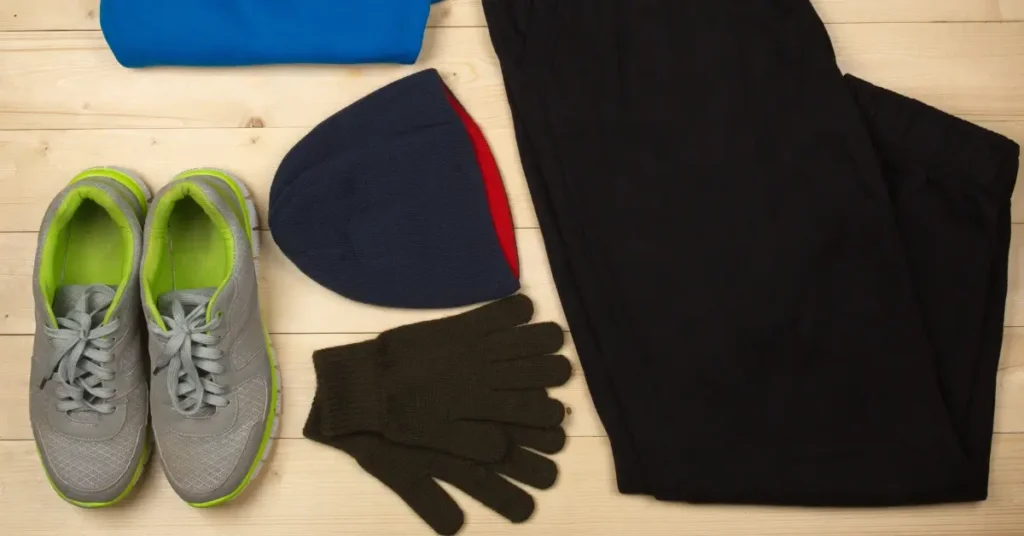
Running in colder conditions requires a different approach. Here are a few essential items to consider:
- Base layer: Start with a moisture-wicking base layer to keep your skin dry and warm.
- Insulating layer: Add a light, breathable long-sleeved shirt for added warmth.
- Outer layer: Wear a windproof, water-resistant jacket to protect against the elements.
- Accessories: Keep your ears and hands warm with a hat, headband, or gloves. Opt for moisture-wicking socks to prevent cold, wet feet.
Remember that your body generates heat as you run, so dress as if the temperature is about 10-20 degrees warmer than it really is. Be prepared to adjust your layers during the race, and don’t forget to practice in your chosen outfit before the big day!
What to wear for a Marathon – Ideal Women’s Gear
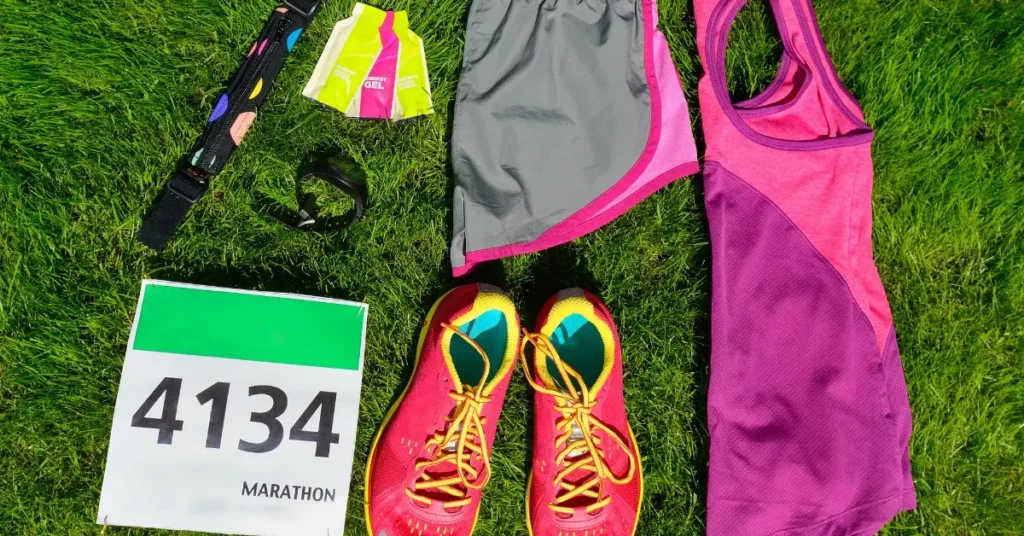
So, you’re wondering what to wear for a marathon? Don’t worry, we’ve got you covered with some suggestions for ideal women’s gear. In this section, we’ll go over some essential items to keep you comfortable and focused throughout your run.
A good starting point is selecting the right running shoes. Shoes that provide proper support and cushioning not only make your run more enjoyable but also help prevent injuries. Make sure to choose a pair that fits well and feels comfortable during your training runs.
When it comes to clothing, moisture-wicking materials are your best friend. These fabrics, like polyester and nylon, help to keep you dry by transporting sweat away from your skin. Consider investing in a moisture-wicking running top and shorts or leggings. Remember, it’s important to wear these materials for both your top and bottom layers to maximize comfort.
Socks can make a huge difference in your overall comfort during a marathon. Synthetic materials like acrylic, polyester, and Coolmax are great options as they help to keep your feet dry and reduce the risk of blisters. Additionally, opt for seamless socks to avoid potential irritations caused by seams rubbing against your skin.
A well-fitted sports bra is crucial for female marathon runners. Your bra should provide adequate support and minimize bouncing during your run. Make sure to try a few different types and styles while training to determine which one works best for you.
What to wear for a Marathon – Ideal Men’s Gear

So, you’re wondering what to wear for a marathon? We’ve got you covered! In this section, we will discuss the ideal men’s gear for a marathon, whether it’s your first or you’re a seasoned runner.
First and foremost, a comfortable and supportive pair of running shoes is essential. Make sure they’re properly fitted and broken in before race day to avoid blisters and discomfort.
Your choice of socks also plays a crucial role in your marathon experience. Opt for moisture-wicking materials that are specifically designed for running, such as Feetures High Performance Ultra Light Socks.
When it comes to clothing, lightweight and moisture-wicking fabrics are key. Wear a well-fitted, breathable shirt and shorts or running tights that allow for freedom of movement. If the marathon takes place in colder weather, consider wearing layers that can be easily removed as you warm up. Don’t forget a well-fitted sports bra for additional support.
Keeping the sun off your face and out of your eyes is vital during outdoor runs. A pair of sunglasses like Goodr Sunglasses are designed specifically for runners, providing both style and function. Additionally, wearing a hat or using a sunscreen like ThinkSport Safe Sunscreen SPF 50+ can further protect your skin from harmful UV rays.
What Not To Wear
So you’re preparing for a big race and wondering what to wear for a marathon? In this section, we will guide you through some items and materials that you should avoid on race day. Let’s dive into the specifics to ensure a comfortable run!
Avoiding Cotton
Cotton is a common fabric that many of us love for daily use, but when it comes to marathon running, it’s best to stay away from it. Cotton absorbs moisture and takes a long time to dry, which can lead to discomfort, chafing, and blisters during your run. Instead of cotton clothing, opt for moisture-wicking materials like polyester or nylon blends that will keep you dry and comfortable throughout the race.
- Cotton socks might seem comfortable, but they can cause blisters due to moisture retention. Choose moisture-wicking performance socks specifically designed for running.
- Cotton shirts can get heavy and clingy when wet with sweat. Go for lightweight, quick-drying shirts to stay comfortable during the marathon.
Inappropriate Shoe Choices
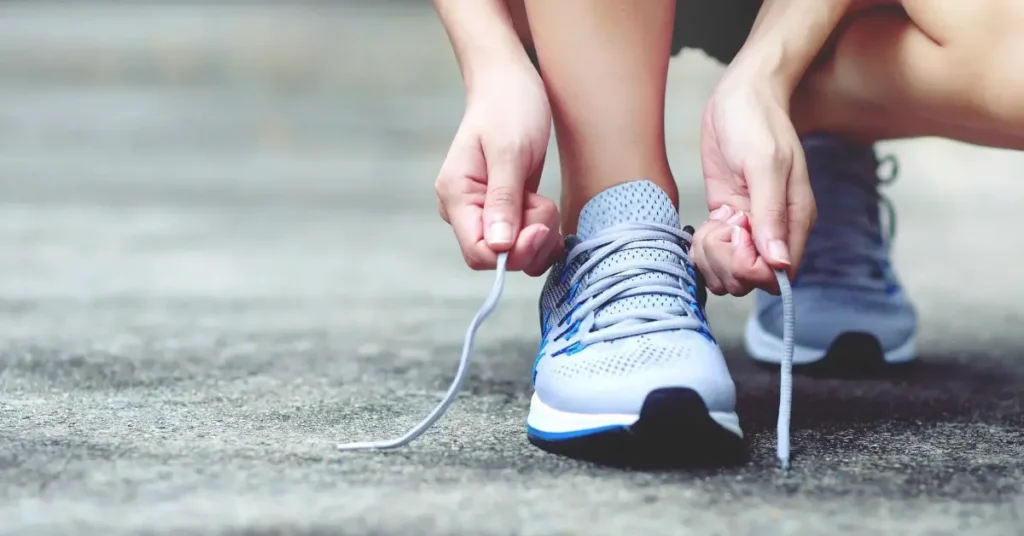
Selecting the right shoes is crucial for a successful marathon. Here are some pitfalls to avoid when choosing your footwear:
- New shoes: Running a marathon in brand new shoes is a recipe for disaster, as you haven’t had time to break them in and adjust to their fit. Make sure to wear shoes you’ve trained in and feel comfortable with.
- Regular sneakers: Although they may seem comfortable, everyday sneakers or fashion-oriented shoes aren’t designed to handle the demands of a marathon. Opt for running shoes that offer proper support, cushioning, and stability for your feet.
- Wrong size: Ill-fitting shoes can cause pain, blisters, and even long-term damage. Get properly fitted at a running store to ensure you have the right size and type of shoes for your foot shape and stride.
By keeping these tips in mind, you’ll be able to make better choices when it comes to deciding what not to wear for a marathon. Happy running!
Our Tips on What to wear for a Marathon
Wondering what to wear for a marathon? We’ve got you covered with our top tips to help you run your best race. Let’s dive into some essential advice that will ensure you’re prepared and comfortable on race day.
Race Day Dress Rehearsal
One of the keys to marathon success is feeling comfortable in your attire. In the weeks leading up to the race, take the time to test out your chosen clothing. This includes your shoes, socks, shorts or tights, shirt, and any accessories. Conduct a “dress rehearsal” during your long runs to make sure everything fits well, doesn’t cause chafing, and is suitable for the marathon’s expected weather conditions.
- Shoes: Choose a pair that you’ve worn in but aren’t excessively worn down. Brooks Ghost 14 can be a good option.
- Socks: Opt for moisture-wicking fabric to keep your feet dry and prevent blisters.
- Clothing: Stick with lightweight, moisture-wicking materials, and consider layering for colder temperatures.
- Accessories: Test out items like hats, sunglasses, and handheld water bottles (e.g., Nathan Insulated Water Bottle) to see if they’re marathon-friendly.
Comfort Over Fashion
While it’s tempting to choose gear based on aesthetics, prioritizing comfort and functionality is crucial when deciding what to wear for a marathon. Consider the following factors:
- Temperature: Check the race-day forecast and select clothing that will be appropriate for the temperature range.
- Moisture-wicking materials: These fabrics will keep you dry and comfortable throughout the race.
- Anti-chafing essentials: Applying an anti-chafing stick or balm can help prevent skin irritation caused by friction.
- Layering: If you’re uncertain about the weather, opt for easily removable layers to adjust to changing conditions.
FAQ – What to wear for a marathon?
What to wear for a Marathon?
When considering what to wear for a marathon, a technical t-shirt paired with mid to lightweight leggings is a solid choice. As you’ll likely warm up after the initial miles, this combination should suffice even on cooler or slightly drizzly days.
Do you need special shoes for marathon?
Although racing shoes aren’t a strict necessity for your upcoming race, they could offer advantages depending on your race strategy. If your main objective is merely to finish the race without a time target, specialized racing shoes might not be essential.
Is it OK to wear new shoes for marathon?
With advancements in shoe technology, there’s no longer a need to “break in” new running shoes. Yet, it’s still recommended to avoid racing in a completely new pair. It’s wise to accumulate some training miles in them first.
What are your recommendations when asked “What to wear for a marathon?” Let us know in the comments.

